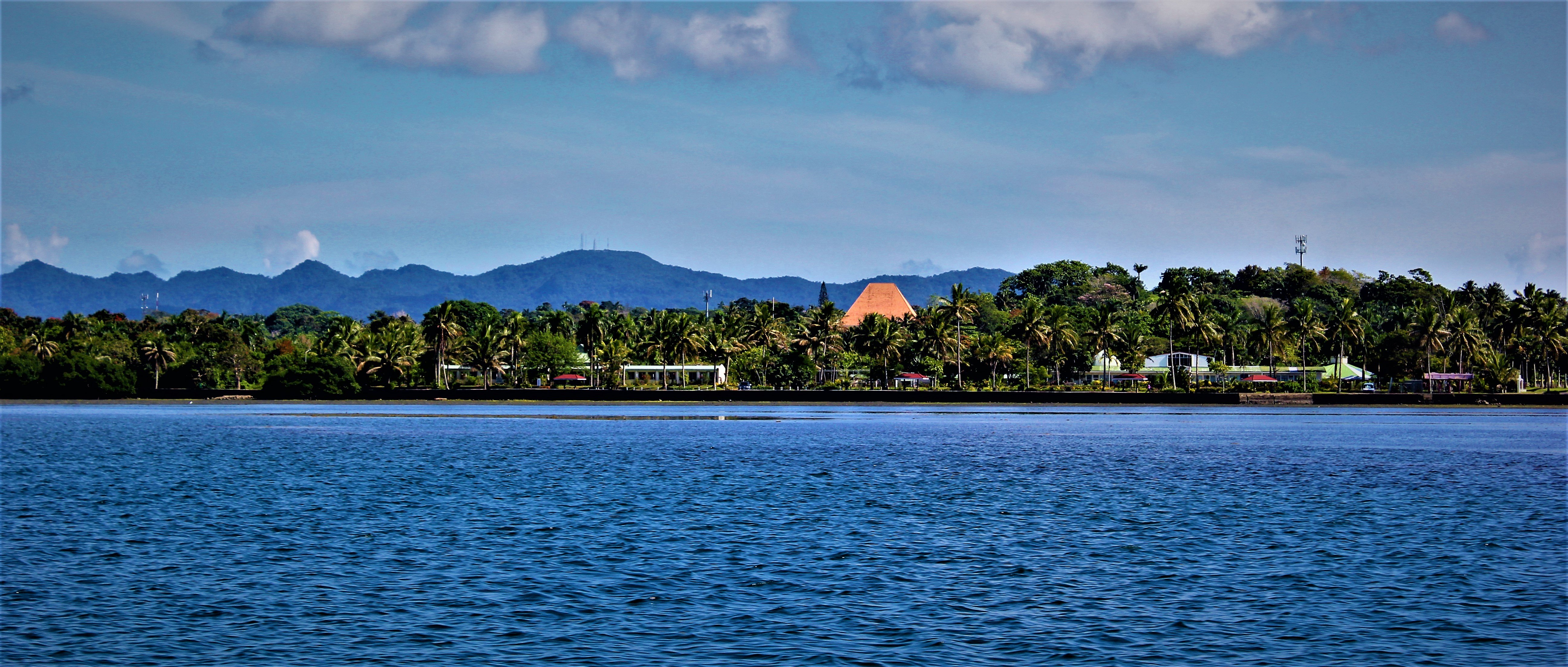Fishing in nearshore waters in Fiji is a common activity, however, it is not always easy to tell when that activity is lawful or unlawful.
Fiji is a common law jurisdiction and accordingly wild fish and other marine organisms in their uncaptured state belong to nobody and the principle ferae naturae applies. However, legislation can and does:
- limit the type of species of fish or other aquatic animals that can be legally caught
- prescribes limits to the fishing methods that can be used to capture fish
- regulates other factors including the minimum size of the fish that may be legally caught and when a fishing licence is required.
In this bulletin we consider the fisheries legislation that is applied to nearshore waters and how it applies to different types of nearshore fishing activity with the aim of better explaining what could constitute illegal fishing activity in nearshore fishing waters. Please note this legal bulletin is prepared on the basis of the Fisheries Act, 1941 and the Fisheries Regulations as they are at the present time, and we are aware that the Ministry of Fisheries is reviewing this legislation with a view to updating it to better manage Fiji's important fisheries resources.
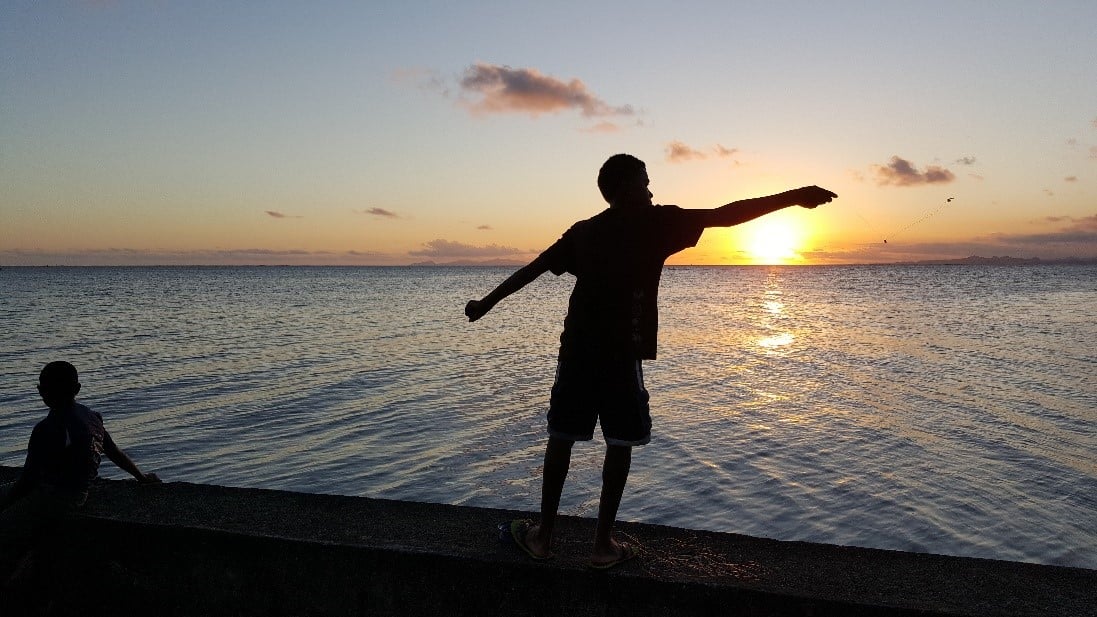
The challenges of determining what nearshore fishing activity is legal and illegal
A walk along Suva’s seawall in the early morning or early evening will provide stunning views of mangroves, ocean, fringing reef, nearby islands, mountains, sun rises or sunsets as well as nearshore fishing activity. This fishing activity may or may not be legal and it is not always easy to tell.
The reasons that it is not easy to tell what is legal or illegal fishing activity include:
- Whether the person is fishing for recreational/subsistence purposes or for commercial purposes may make the activity either legal or illegal (note: commercial purposes means fishing with an intention of selling the fish, subsistence means with the intention of consuming the fish)
- Whether the person fishing has a valid licence (generally speaking anyone fishing with the intention to sell the fish caught is fishing for business or commercial purposes and must have a valid fishing licence)
- Where the person fishing is located as standing on the shore may make a fishing activity legal, whereas being on a boat may mean that it is illegal
- The method of fishing used, whether by fishing line, fish trap, spear, net, explosives or poison
- The type of gear used – for example, some nets may be legal and others illegal
- The species of fish that is caught because catching some types of fish or aquatic animal is illegal
- The size of the fish that is caught because some fish are only legally caught if they exceed a minimum size as set out in the Fisheries Act/Regulations.
There are also other factors that add to the complexity and this includes:
- Different Acts/legislation applies to or regulates nearshore fishing activity but the main legislation is the Fisheries Act, 1941 and the Endangered Species Act.
- The Fisheries Act, 1941 is an old piece of legislation and can contribute to confusion regarding what is legal and what is illegal fishing activity in nearshore waters.
- Nearshore fishing takes place in traditional fishing grounds/qoliqoli areas. Qoliqoli areas are mapped and registered to a collection of iTaukei landowning groups (mataqali) which together form a Yavusa. Members of the Yavusa all have subsistence fishing rights in their qoliqoli areas that are recognised by the Fisheries Act with the result, amongst other things, that the Yavusa or its representative must be consulted before any commercial fishing licence is granted in “their” qoliqoli area. Below we set out a graphic explaining this process.
We consider each of the factors in turn in the hope of assisting the determination of what fishing activity in nearshore waters is legal and what is illegal.
The reason for fishing
Fishing for commercial purposes in nearshore areas requires a licence regardless of who is undertaking the fishing activity or what is being caught.
Commercial fishing without a licence in a nearshore area is a criminal offence, with the offender being liable upon conviction to imprisonment for three months and/or a fine of five hundred dollars.
However, there are 3 specific exceptions in the Fisheries Act which, if they apply to the fishing activity, will make commercial fishing in a nearshore area without a licence, permissible/legal. These are when the fishing activity is undertaken by using:
- only a spear
- a line from the shore or
- a portable fish trap that can be operated by one person.
If the commercial fishing activity involves any other sort of fishing activity then any person, including the traditional fishing rights holders from the applicable Yavusa, must obtain a commercial fishing licence and this involves following a process set out in the Fisheries Act, 1941 that culminates in the payment for a commercial licence for only that fishing ground (qoliqoli). It should also be noted that as part of that process the applicable Yavusa or its representative must be consulted and the licence fee structure/access fee is currently under review by the Ministry of Fisheries. A graphic at the end of this article illustrates this process.
Further the commercial fishing licence may or will be subject to conditions that will be noted on the commercial fishing licence. The Minister of Fisheries is also empowered by the Fisheries Act to make Fisheries Regulations pursuant to section 9 that can, amongst other things, declare certain areas where fishing activity is illegal or restricted. These are known as Marine Reserves and once the Regulations for the Marine Reserve are brought into force otherwise legal fishing activity may become illegal fishing activity.
Finally, having a commercial fishing licence or commercially fishing using one of the 3 excepted methods (spear, line from the shore or portable fish trap) still means that all the other laws of Fiji apply to the fisher, including the Fisheries Act, and Regulations and the Endangered and Protected Species Act, 2002 (as amended). Indeed these laws apply regardless of whether the fisher is fishing for a commercial or subsistence or recreational purpose and apply to:
- Fishing methods
- Fish or aquatic species
- Fish sizes.
We address these laws and regulations that have universal application below.
Fishing methods
Various fishing methods are illegal regardless of whether a licence is held or not. This includes:
- Using dynamite or other explosives
- Poison which includes any chemical or chemical compound, any substance containing derris or its active principal rotenone, or any plant belonging to the genera Barringtonia, Derris, Euphorbia, Pittosporum or Tephrosia or any of its extracts or derivatives
- Other methods banned from time to time by Regulations
- Use of UBA (underwater breathing apparatus) (banned by Fisheries Regulation pursuant to section 9 of the Fisheries Act).
There are restrictions on the types of nets that may be used for fishing regardless of whether the fishing is for commercial or for subsistence purposes. These restrictions take into account the mesh size which, when wet and stretched, is measured at two diagonally opposing knots, as well as overall dimensions and include:
- Hand net – refers to a net fixed on a frame or on two poles which can be moved in all directions by one person. While its maximum width should not exceed 1.5m, there is no restriction as to mesh size.
- Cast nets – refers to a round net with weights attached to it in such a way that it sinks to the bottom as it is cast over the fish. The mesh size must not be less than 30mm.
- Nets used solely for sardines and whitebait - must not be joined together and may not have a mesh size less than 30mm. Also, their overall dimensions must not exceed 10.5m along the cork line and 1.5m from the cork line to the ground rope.
- Gill nets – must be obtained from the Fisheries Division with mesh size not less than 30mm and may only be used for catching garfish.
- Wading net – refers to a net fixed on a frame or on two poles and can be moved in all directions by two persons. Its maximum width should not exceed 4.3m while the mesh size must not be less than 75mm.
- All other nets not specifically mentioned in the Fisheries Act Regulations - the mesh must not be of a size less than 75mm.
In terms of the use of nets there is a grey area in terms of what length of net is permissible. It is not uncommon to see long nets being let out that may stretch for hundreds of metres, but in terms of the law, nets are only limited to 10.5m for nets used to catch sardines and whitebait. Further as set out above, only hand nets and wading nets have set dimensions. We cannot, therefore, say for sure that nets longer than 10.5 metres used in nearshore areas are illegal if they are not being used to catch sardines and whitebait.
Sometimes, fishing takes place at the river mouth or in the sea within 100m of the river mouth. The usage of certain nets in those areas may hinder the migratory movements of fish and for that reason, the usage of all nets apart from hand nets, wading nets and cast nets is prohibited.
Apart from the fishing methods previously mentioned, the use of fish fences is also regulated according to the materials used in their construction. For instance, if the fish fence comprises of cane or reed screens, the section at the inmost point in each terminal trap or pan must not be less than 1m in length and of the full height of the fence, wherein the cane or reeds placed must not be less than 50mm apart. If netting or cord, galvanised wire or expanded metal is used instead, its mesh must not be less than 50mm across the smallest diameter. Where the fences are made entirely out of wire netting or expanded metal, the mesh of the netting in the traps or pans must not measure less than 50mm along the shortest diameter.
Species
For the survival of certain species that are endangered, it is necessary to regulate fishing activities regardless of whether fishing is for commercial or subsistence purposes.
Fishing for certain species of fish or aquatic animals is prohibited by law including:
- Turtles
- Dolphins and other marine animals
Bans can be implemented for certain species via Regulations made pursuant to section 9 of the Fisheries Act.
The Endangered and Protected Species Act 2002 includes a list of fish species, amongst other things, which are threatened with extinction or are likely to become extinct if its trade is left unregulated. Anyone who possesses, offers, or exposes for sale any of the listed species commits an offence and is liable upon conviction to a fine of five thousand dollars or to two years imprisonment.
Size limits
While it is not uncommon to see undersized marine organisms being sold or offered for sale at the local markets, laws are in place to prevent the harvesting of such by prescribing a minimum size for fish caught. Pursuant to the Fisheries Act Regulations, this includes, but is not limited to:
- Swimming crab or qari dina – 125mm when measured across the widest part of the shell
- Trocas shell or sici – 90mm across the whorl
- Barracuda or ogo – 300mm measured from the point of the snout to the middle of the tail fin when the fish is laid flat
- Parrotfish or ulavi – 250mm measured from the point of the snout to the middle of the tail fin when the fish is laid flat.
These size limits apply to both commercial and subsistence fishing, except where the fish is caught by children under sixteen years of age for non-commercial purposes using a hook and line from the shore or wading near the shore. Failure to comply with the prescribed size limits is an offence incurring a penalty of imprisonment for three months and/or a fine of five hundred dollars.
Diagrammatic explanation of legal and illegal nearshore fishing activity:
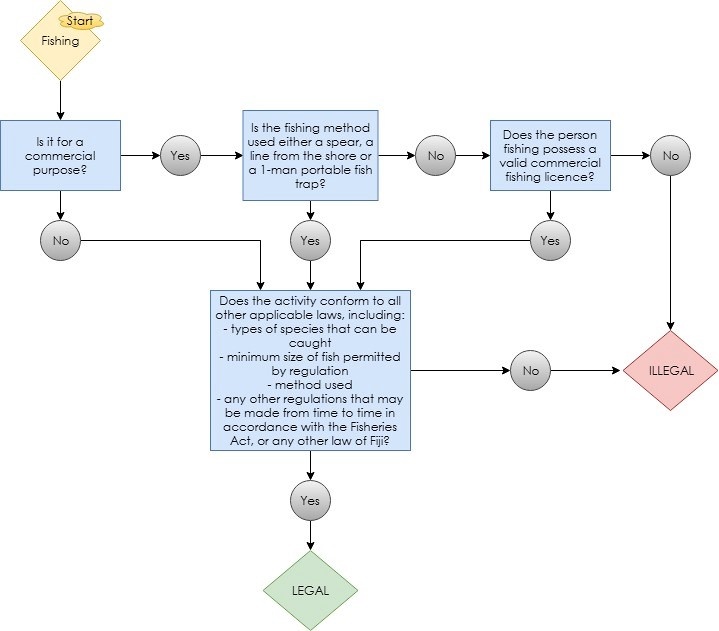
Conclusions
Despite the present regulatory regime, Fiji is depleting its inshore fisheries. This is due to overfishing driven by commercial factors. (Gillett, 2016) made an observation that:
The volume of production from the coastal commercial fisheries of Fiji is almost twice as much as that of PNG, despite PNG having a population almost nine times greater than Fiji.[1]
As surprising as that may be, it highlights the pressure that Fiji’s nearshore fisheries is under and good regulation of fishing activity is important now and for the future of Fiji's fisheries and food security. Good regulation also requires the difficult task of enforcement of the laws and regulations related to fishing activity and for this to work requires collaboration between relevant government agencies including, but not limited to: the police, Ministry of Fisheries, and the office of the Director of Public Prosecutions.
Examples of common types of nearshore fishing
Fishing with a hook and line from the shore:
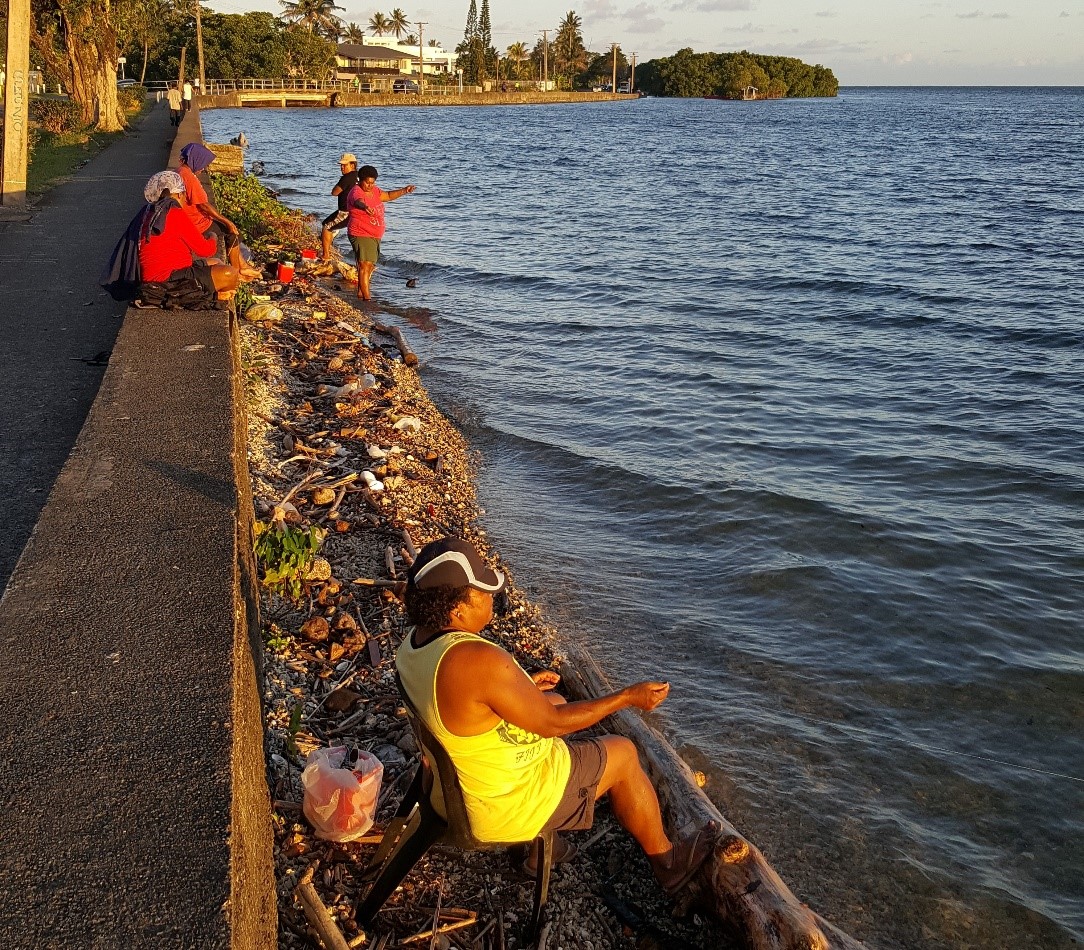
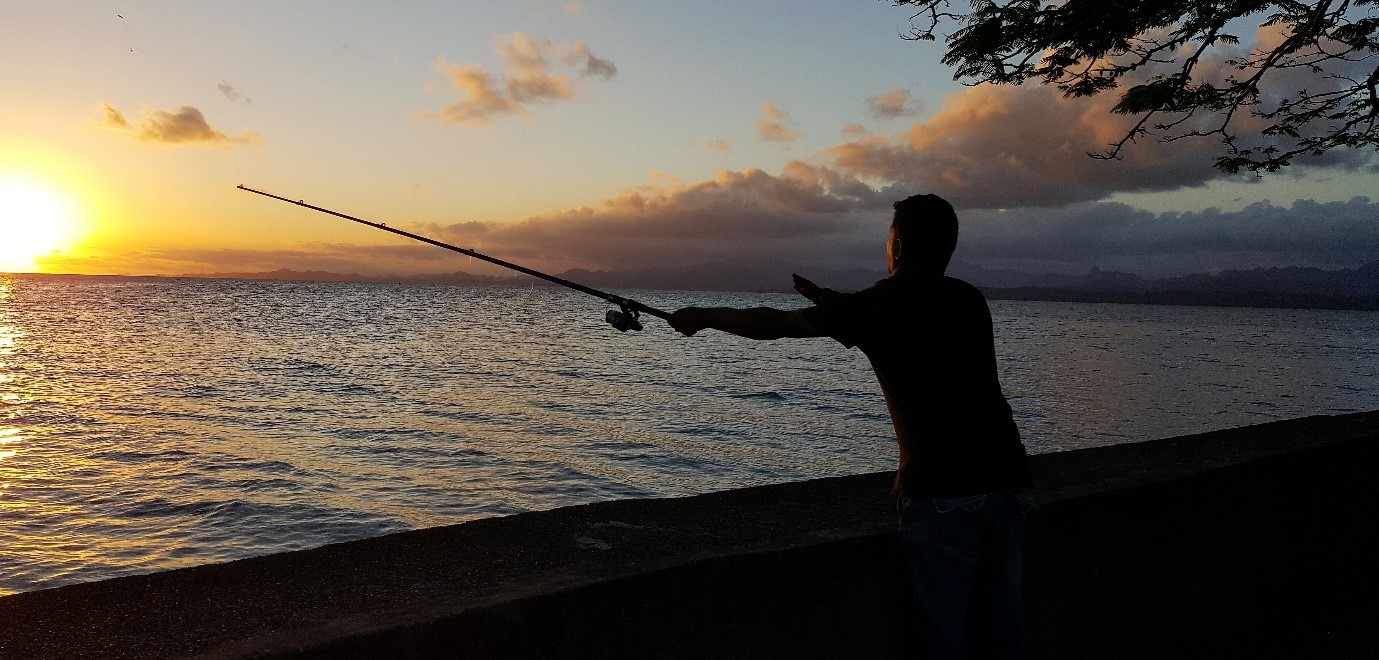
| LEGAL | ILLEGAL |
|
|
Fish Traps:
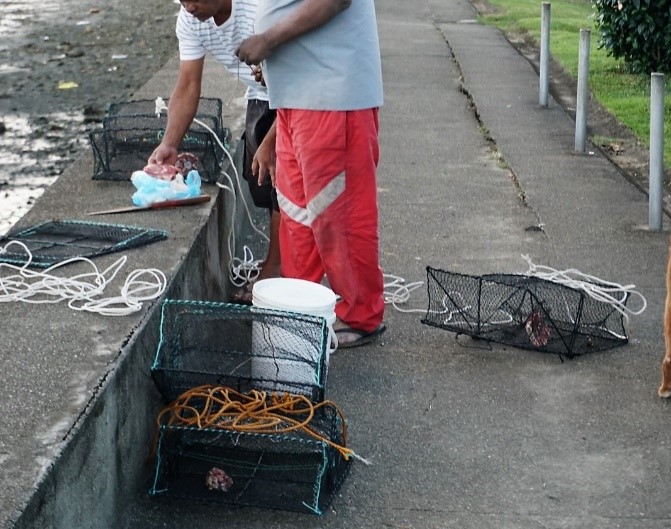
| LEGAL | ILLEGAL |
|
|
Cast net - operated by one person:
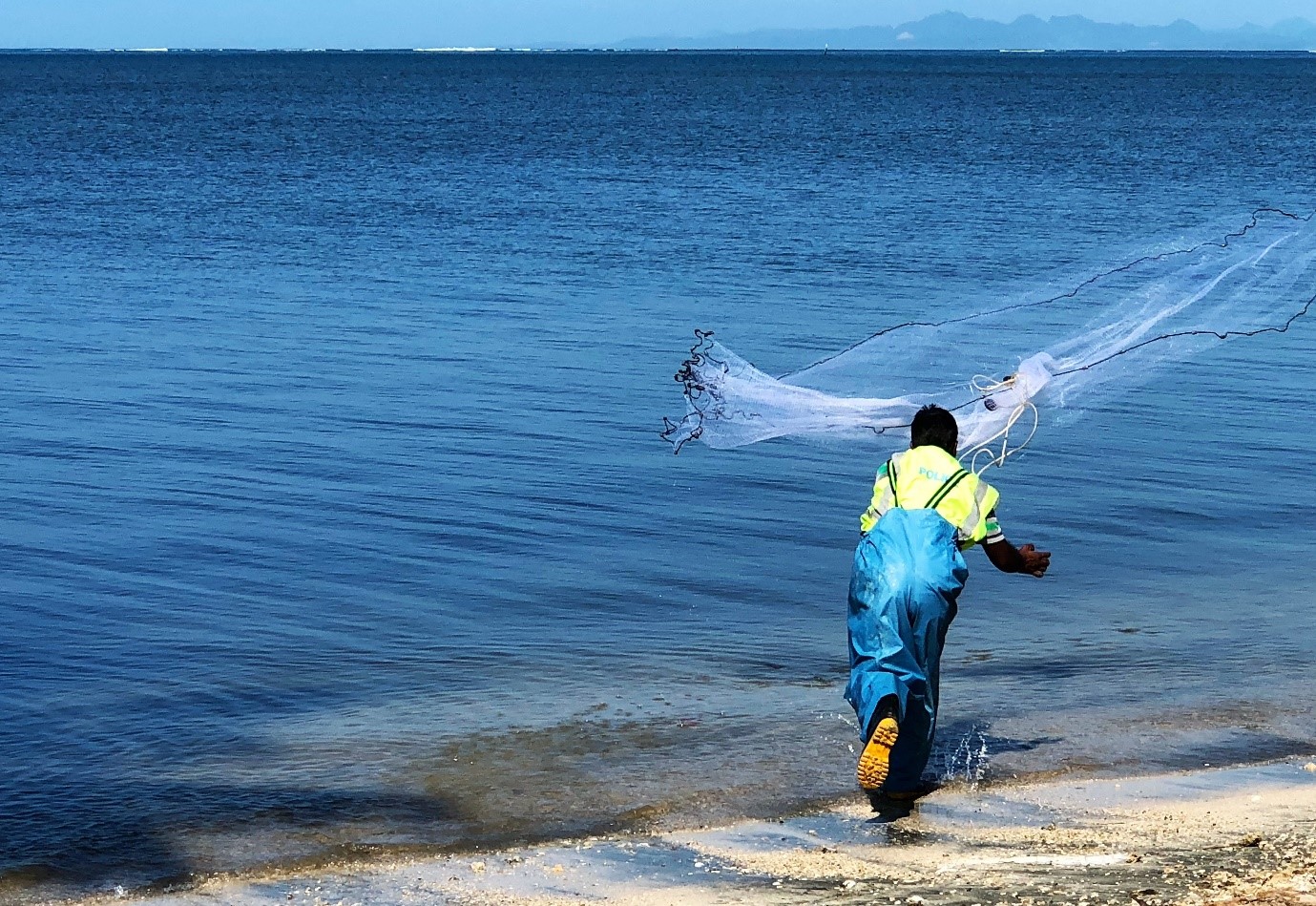
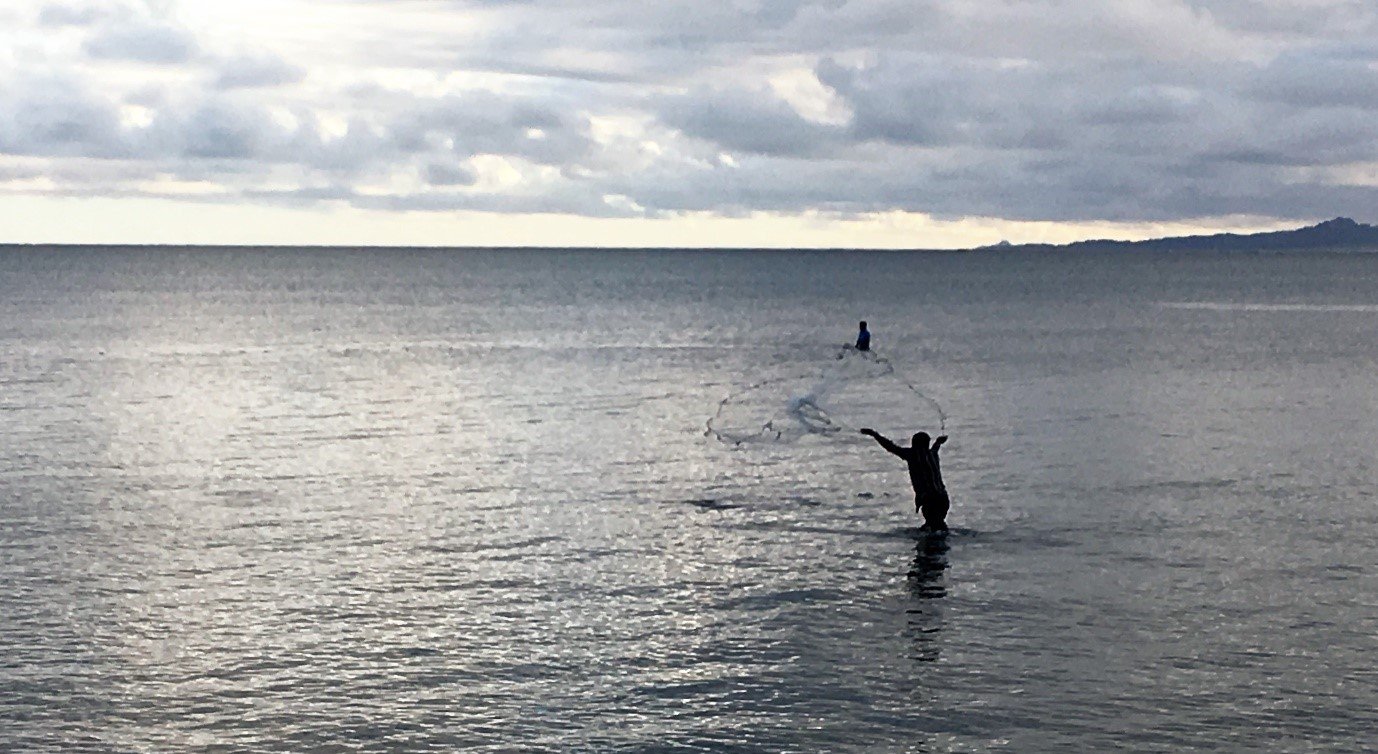
| LEGAL | ILLEGAL |
|
|
Fishing net operated by two or more persons:
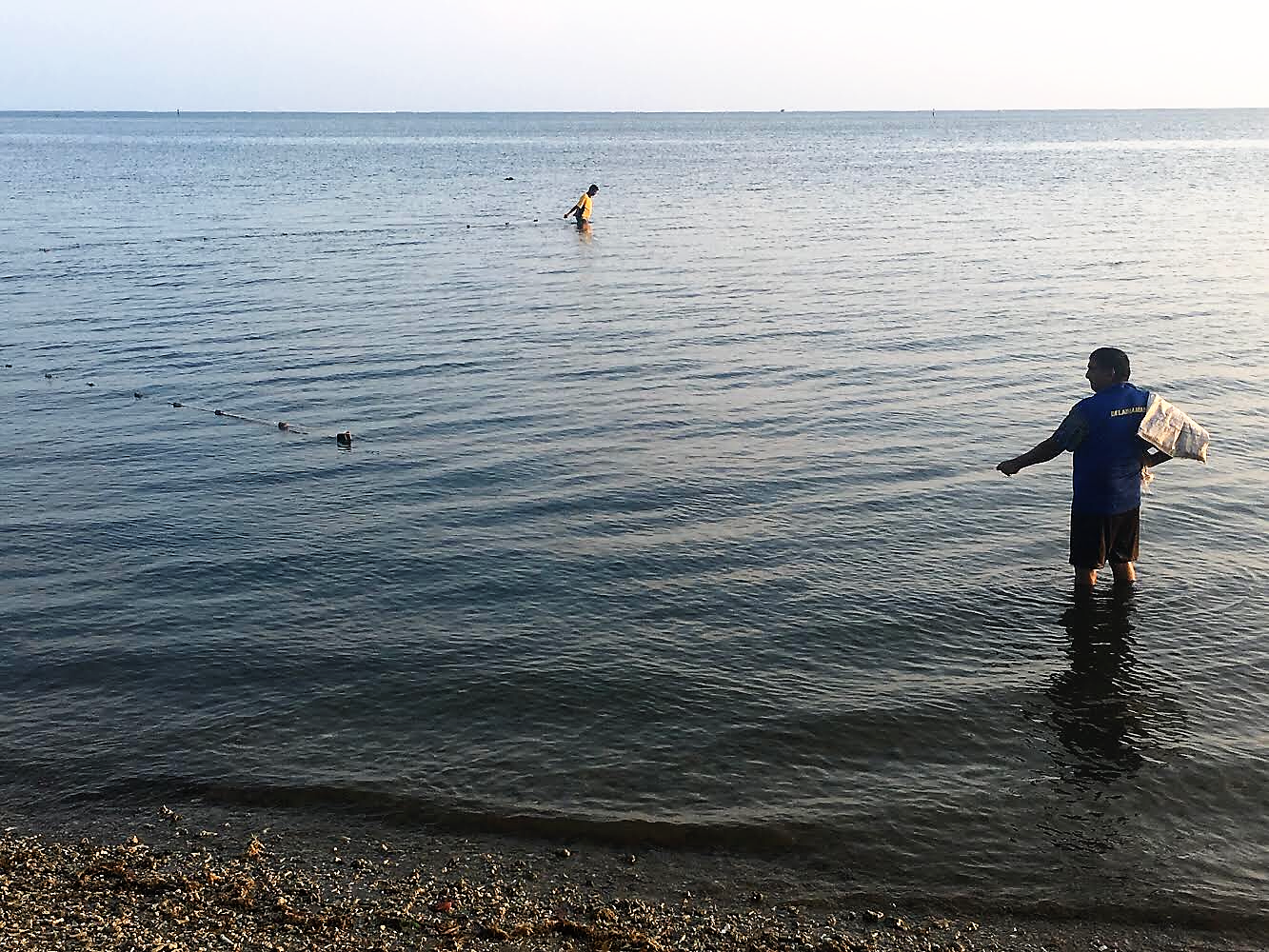
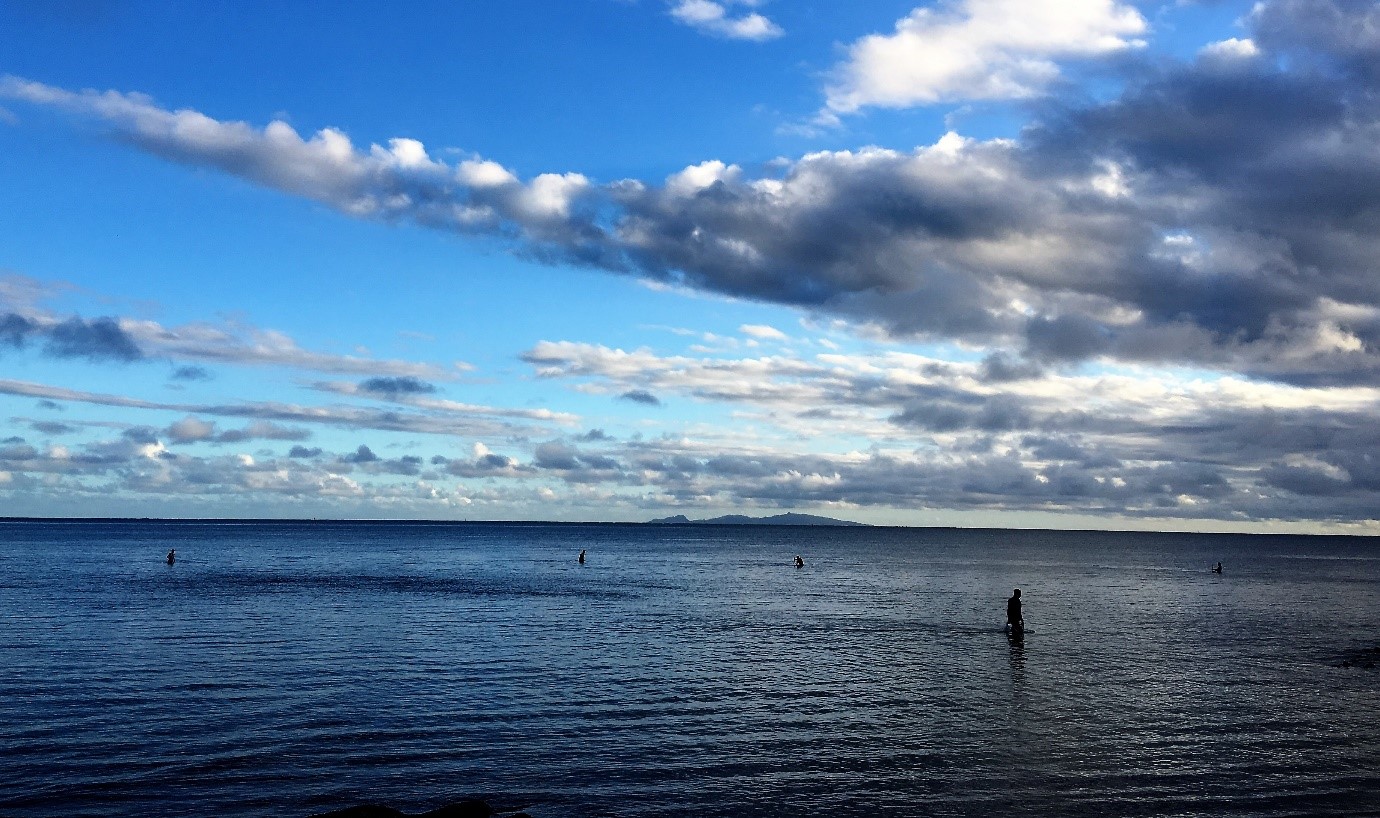
| LEGAL | ILLEGAL |
|
|
Fishing from a boat:

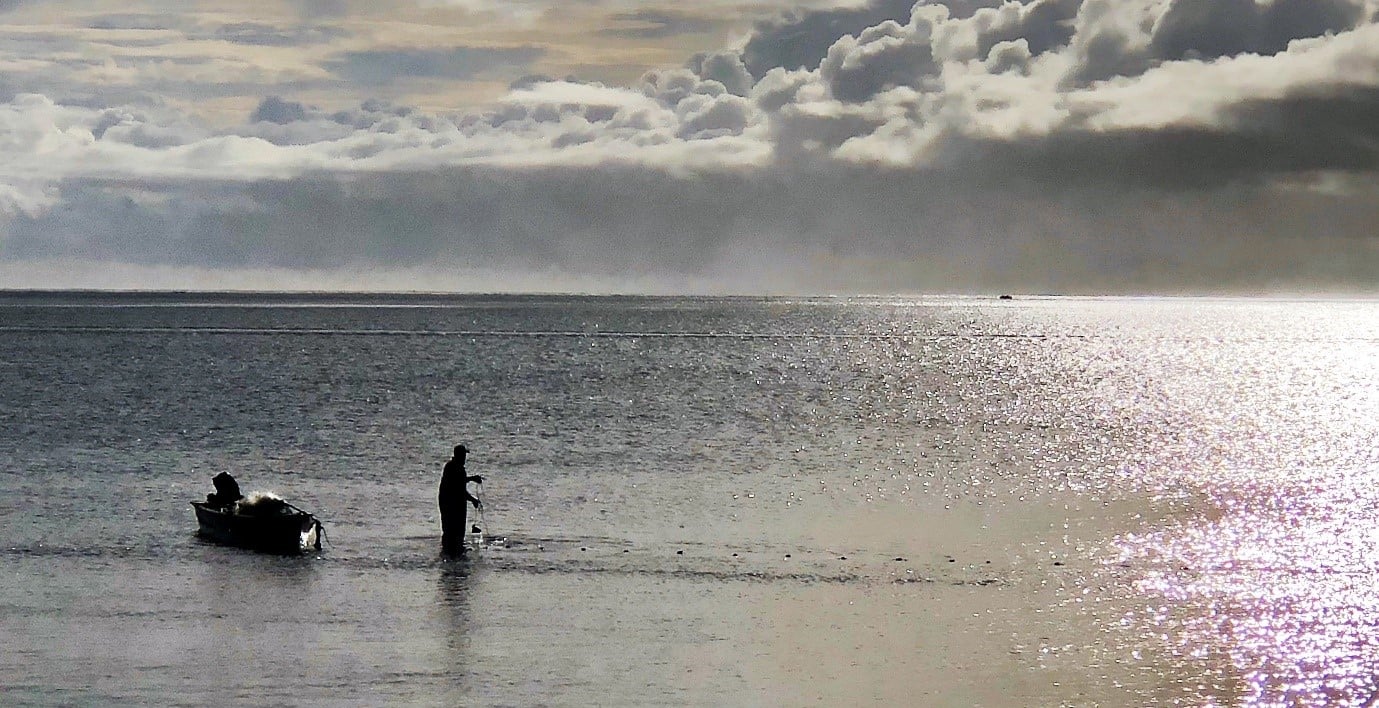
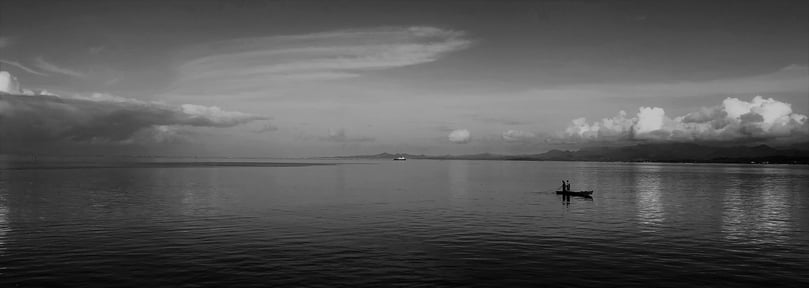
| LEGAL | ILLEGAL |
|
Grey area
|
Fishing using a spear:
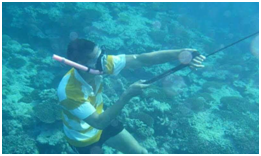
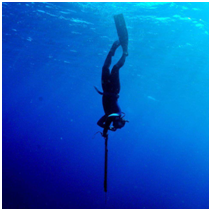
| LEGAL | ILLEGAL |
|
|
Other methods of fishing:
| LEGAL | ILLEGAL |
|
|
Process for obtaining a commercial fishing licence under the Fisheries Act, 1941:
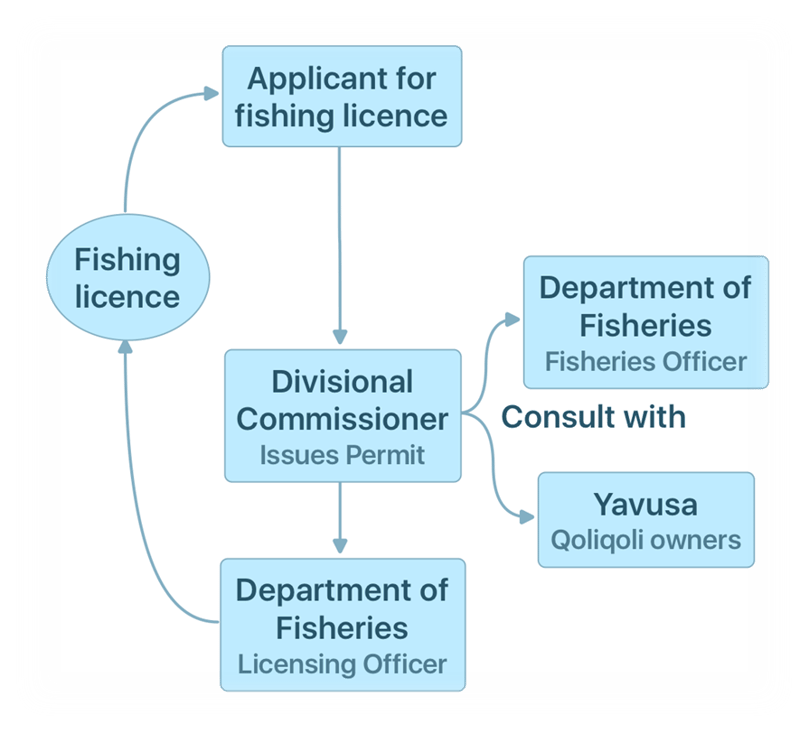
[1] Gillett, R. (2016). Fisheries in the economies of Pacific Island countries and territories. Noumea: The Pacific Community, p.538.
Please note:
This legal bulletin is provided for general information purposes only and it is not, and should not be relied on as, legal advice.


